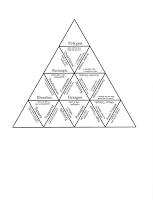Several folks have asked me to describe my classroom. Since I share a space with other faculty members, I don't have a dedicated classroom, though the University added cabinets for me last summer so that I wouldn't have to drag all my materials up and down the stairs or from the closet down the hall.
I spend about an hour each afternoon pulling materials and setting up for my class. Here's what the room looked like this week as I set up for class. This session was focused on fractions and decimals.
Students sit in groups of 4 and work throughout the 3-hour session in the whole group and with their table partner. The classroom can hold 20 students, but it's really crowded at capacity. I move around a lot, and a full class makes this nearly impossible. Right now I have a very manageable class of 14.
I come to class each week with a bag or box of books. I start by putting children's literature titles related to the topic around the room. Then I open the cabinets and pull out boxes of manipulatives, game sets, art/supply boxes, and more. I put a class agenda at each seat and set out materials for each group/pair. Sometimes they have paper manipulatives to cut out. The art/supply boxes contain scissors, glue sticks, highlighters, rulers, colored pencils, crayons, tape, and more. Just about anything they might need for interactive notebooks is in here.
The game sets contain an assortment of dice (traditional, pattern block, fraction, 10-sided, 4-sided, etc.), transparent spinners, a deck of cards, and 2-colors of transparent chips (30 each). These great little containers are from the Dollar Tree. Each pair gets one of these boxes.
I also use these containers for base-10 blocks. Each box contains 20 tens, 5 hundreds, and 100 ones.
Here's what the tables looked like just before the students arrived. There was one set of pattern blocks and an art/supply box per table group. For each pair there was a game set, base-10 blocks, fraction circles, and fraction strips.
Students pick up any handouts and additional materials from the storage countertop.
Here's what you'll find inside those cabinets.
You'll notice that while it's easy to find things, these containers are woefully lacking in labels! Those round containers you see are also from the Dollar Tree. Here's what they hold.
This particular set of Cuisenaire rods is missing the dark green rod (#6)! I do like these containers, though they they take up more storage space than the divided rectangular containers. (Hey, when you shop at the Dollar Tree you take what you can get, and you never know what will be in stock!)
I also recycle containers from home, including milk jugs, rice jars, peanut butter jars (only after putting through the dishwasher at least 3 times), tea tins, and more. Here's how I store my collection of
foam beads (from
Oriental Trading).
And here's how I store all my extra colored pencils. This idea came
from Pinterest (where else?)!
So that's it for my math materials and a bit about how I organize and set up. My apologies for some of the fuzzy pictures.
If you are looking for even more ideas you can find a wealth of them (and free manipulative labels!) from teachers far more ingenious than me on my
Organizing Math board.
How do you organize your math materials, at home or in your classroom? If you have a new or tired-and-true idea, please share it!















































